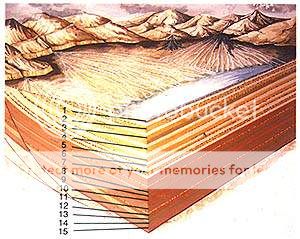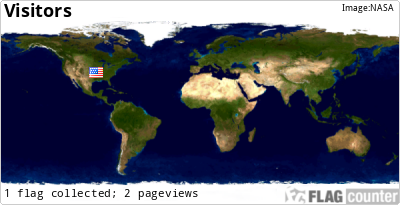Erosion is ever present in nearly every landscape on earth. You may
not notice, but the natural forces responsible for shaping our
planet are agents of erosion. Erosion comes in many forms. Some
types of erosion can be quick and observable in the shape of a
mudslide or avalanche, but more often than not erosion's progress
is so inconspicuous that it can only be identified by the print it
leaves behind. In fact, something as simple as water running
downhill can eventually leave behind a print the size of the Grand
Canyon
Type Two main types of erosion agents exist: water
and wind. Essentially, what these types of erosion displace
particles of sediment, soil or rock that have been separated
through the process of weathering. This phenomenon is so effective
it is known to be responsible for relocating the equivalent of
mountains. Water erosion can come in the form of anything from a
slow trickle of water that carries a particle of dirt away, to the
effect of waves pounding on the shore causing the wearing of rocks.
Wind erosion, which may be even more common, is responsible for
creating deserts.
Features The phenomenon of erosion has two main
aspects, which are weathering and transportation. Weathering is a
set of mechanical and chemical processes by which a rock
decomposes. The process can be broken down into three stages:
dissolution, abrasion and corrosion. Dissolution is the
decomposition of a rock into fragments or parts. Abrasion continues
the process of wearing down through friction, while corrosion is
the deterioration of minerals inside the rock particles through
chemical reactions with water or acid. The other aspect of erosion
is transportation through wind or water. And, while it doesn't
necessarily occur after the weathering process has begun, the two
definitely work hand in hand.
Identification Numerous methods are available to
identify the effects of erosion. Water, for example, can be
responsible for the creation of grooves, flutes, troughs, potholes
or the streamlining and sculpting of various types of landforms,
depending on the type water erosion taking place. Wind can have a
similar effect on mountainsides and is directly responsible for the
creation of sand dunes, whether at the beach or in deserts.
Function Erosion is an intrinsically natural
process. A certain amount is, in fact, a healthy aspect of the
natural balance. For example, gravels continuously move downstream
in watercourses. Sediment is transported by water streams thereby
disseminating nutrients where there would otherwise be none.
Excessive erosion, on the other hand, can be quite disastrous. A
problematic consequence of this is the degradation of agricultural
land. In some parts of the world, this phenomenon could seriously
reduce the lands' ability to sustain human life.
Significance The erosion process is responsible
for how our world looks today. It is, in reality, part of a huge
cycle that has not only helped to physically shape mountains,
valleys, canyons and other land masses, but also helped determine
the course of human civilization.
(Courtesy e-how.com)
Witwaters Rand

(Credit: courtesy The Chamber of Mines of South Africa)
1 Ventersdorp Contract Reef
2 Mondeor Conglomerate formation
3 Kimberly Conglomerate formation
4 Bird Conglomerate formation
5 Livingstone Conglomerate formation
6 Johnstone Conglomerate formation
7 Main Conglomerate formation
8 Crown Formation
9 Veldschoen Reef (inner basin reef)
10 Magnetic Horizon in in lower Jeppestown shale
11 Buffelsdoorn (Outer Basin reef)
12 Boulders Reef
13 Magnetic shale in Witport Jie Formation
14 Magnetic West Rand shales
15 Rietfontein tillite
At this location you will find that the the
Witwatersrand reefs were deposited between 3,000 and 2,700 million
years ago. The reefs vary widely, but the majority are
conglomerate, with pebbles of quartz and chert in a matrix of
quartz grains, silicate and various sulphides, mainly pyrite. They
range from thin, small-pebble reefs, often with great lateral
extent, to thick conglomerate. Many reefs are the product of
reworking by fluvial agencies, while others have features
compatible with formation on beach-like surfaces in the environment
of lakes and seas. They were all formed under shallow water.You
will also find very good examples of Magnetic West Rand shales at
this location. On closer inspection Magnetic West Rand shales are
variably flakey, reddish to brownish or purply-black slaty shales.
In places they are banded or striped and inbedded in quartzite
layers. The lower parts contain layers which are highly
ferruginous, with a magnetite content of up to 48 percent (much
higher than normal), and thin layers, forming what is known as
banded ironstone.Looking higher up against the rock face you will
also notice numerous caves indicating that the water level must
have been a lot higher in the past.
To log this
EarthCache e-mail the cache owner the answers to the following
questions:
1.What evidence did you find walking along the stream of the
different types of erosion to the shale rock?
2.What types of erosion caused the geography of this area,
specifically the erosion to the rocky canyon walls? (There could be
more than one single factor)
3.Look carefully at the various layers and explain some of the
crystals, colours or other interesting components you observed in
the shale.
4.As a optional request feel free to add photos of the types of
erosion that you found
here.
